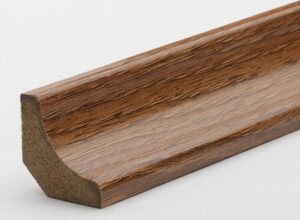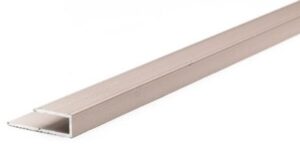At MTE Floors, we take pride in delivering high-quality timber flooring installations that transform your living spaces. A crucial aspect of achieving a flawless finish lies in the attention to detail, especially when it comes to covering exposed edges and expansion gaps. In this article, we’ll explain why trims and scotia (or skirting) are essential components for a polished look and how they contribute to the longevity and aesthetic appeal of your new floor.
Why Are Exposed Edges and Expansion Gaps Necessary?
When installing timber flooring, it’s inevitable to have exposed, cut edges and expansion gaps. These are necessary for several reasons:
- Expansion and Contraction: Timber is a natural material that expands and contracts with changes in humidity and temperature. Expansion gaps allow the flooring to move without causing buckling or warping.
- Precision Cutting: Even with the most precise cutting techniques, the edges of the flooring may not perfectly align with the walls or other fixed structures. This results in visible gaps that need to be addressed for a seamless appearance.
The Role of Trims and Scotia
Trims and scotia (or skirting) play a crucial role in concealing these necessary imperfections. Here’s how they enhance your flooring:
- Covering Expansion Gaps: Trims and scotia effectively hide the expansion gaps between the floor and the walls, ensuring that the necessary space for timber movement is not visible.
- Hiding Cut Edges: The edges of the timber planks can sometimes be uneven or rough after cutting. Trims and scotia cover these edges, providing a clean, smooth transition between the floor and the walls.
- Protecting the Floor Edges: These elements also protect the edges of your timber flooring from damage due to foot traffic, vacuuming, and other activities.
Types of Trims and Scotia
There are various types of trims and scotia available, each designed to meet different aesthetic and functional needs:
- Quadrant Scotia: This type of scotia has a rounded profile and is ideal for creating a soft, classic finish around the edges of your flooring.

- Square Edge Scotia: With its modern, straight lines, this type of scotia provides a contemporary look that complements sleek, minimalist interiors.
- L-Shaped or C Channel Trims: These trims are perfect for transitioning between different types of flooring, such as from timber to carpet or tile.

- T-Mouldings or Cover Top Transition Trim: These trims are used to cover the gap between two sections of flooring that are at the same height, such as doorways or between rooms.
Installation Tips for a Professional Finish
For the best results, it’s important to follow these installation tips:
- Choose the Right Material: Select trims and scotia that match or complement your flooring material and color for a cohesive look.
- Proper Measurement: Ensure precise measurements to avoid gaps or overlaps. Accurate cutting is essential for a snug fit.
- Secure Installation: Use the appropriate adhesives or nails to secure the trims and scotia firmly in place, preventing any movement or gaps over time.
- Attention to Corners: Pay special attention to the corners where two pieces of scotia meet. Mitre cuts ensure a neat and professional finish.
The Final Touch
Trims and scotia are not just functional; they are the final touch that brings your flooring project together. By carefully selecting and installing these elements, you can achieve a professional, high-quality finish that enhances the beauty and durability of your timber flooring.
At MTE Floors, we understand the importance of every detail in creating a perfect floor. Our team of experts is here to assist you in choosing the right trims and scotia for your project and ensuring they are installed to the highest standards. Contact us today to learn more about our services and how we can help you achieve the floor of your dreams.


 2B Coronation Road, Baulkham Hills
2B Coronation Road, Baulkham Hills

